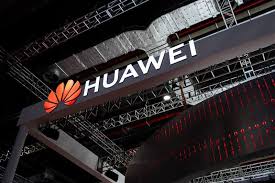
Huawei unveiled its most ambitious AI infrastructure yet (the CloudMatrix 384) at the World Artificial Intelligence Conference (WAIC) held in Shanghai from July 26th to 28th, 2025. Huawei’s CloudMatrix 384 was positioned as a direct competitor to Nvidia’s flagship GB200 NVL72 system.
The CloudMatrix 384 AI supernode can reportedly match Nvidia ‘s computing power and is said to reduce the blockage in the computing segment for artificial intelligence data centers. The big question is, can CloudMatrix 384 truly compete with the flagship GB200 NVL72?
Let’s take a dive into the details of this groundbreaking release and what it means for the global AI race.
Huawei’s CloudMatrix 384: A Powerhouse Built for Scale
The CloudMatrix 384 AI system is a rack-scale behemoth powered by 384 Ascend 910C chips and is able to maintain interconnectivity between the chips to form a perfect supernode architecture. This AI system is capable of delivering up to 300 petaflops (PFLOPs) of dense BF16 compute, which is nearly twice the 180 PFLOPs of Nvidia’s GB200 NVL72 system.
Compared to previous Ascend chips that are capable of delivering one-third of Nvidia’s Blackwell GPU in performance, the CloudMatrix 384 delivers more in performance and computing power. With 3.6x more memory capacity and 2.1x more bandwidth than Nvidia’s GB200 NVL72 system, it is able to offer efficient hardware support, ultra-large-scale AI training, and real-time reasoning.
Another thing that sets the Cloudmatrix 384 apart is its supernode architecture, which enables ultra-high-speed chip interconnections using 6,912 x 800 Gbps transceivers. This architecture also helps maximize the AI system’s internal bandwidth and minimize latency to ensure the chips work as a cohesive unit.
The system is designed with Huawei’s proprietary software stack, alongside MindSpore and CloudMatrix-Infer, which allows it to handle demanding AI workloads with an efficiency that rivals Nvidia’s offerings in certain metrics.
Why Huawei’s Timing Is Spot-On
Due to the lingering tension left behind after the US-China trade war that resulted in the ban on exports of Nvidia H20 chips to China, Huawei’s launch of the CloudMatrix is one that comes at a critical moment for China.
Although trade of H2O chips has been restored between both countries, the resulting wake-up call China got during the trade war is one that will shape and accelerate the invention and production of high-efficiency AI chips.
With China seeking to cut down (and completely erase) its dependence on imported chips, Huawei’s launch of the CloudMatrix 384 AI system has been readily accepted in the domestic market. CloudMatrix 384 is already operational in Huawei’s data centers in Wuhu, Anhui province, and has been adopted by some domestic Fortune 500 companies.
Huawei is already a leading domestic supplier of AI chips in China and is budding with the potential to someday make chips more powerful than Nvidia.
What This Means for the AI Industry
For the Chinese AI race, Huawei’s CloudMatrix 384 is a statement of its ambition to achieve technological self-sufficiency in AI. The CloudMatrix provides a domestically developed alternative for training LLMs and other AI applications, which aligns with China’s broader push for digital sovereignty.
While the CloudMatrix 384 might be largely accepted domestically, there will be hurdles for the chip’s acceptance in the global market. For one, the chip isn’t budget-friendly, with a unit costing up to $8.2 million, which is three times Nvidia’s GB200 NVL72.
Also, the CloudMatrix consumes about 559 kW of power, which is an added expense for countries where electricity prices are quite high (unlike in China, with low electrical costs). This will limit its appeal to markets outside China, where cost and interoperability with CUDA (Compute Unified Device Architecture) remain critical.
Nevertheless, Huawei is on the path to building its legacy in AI infrastructure regardless of the cost of power efficiency or acceptance in the global AI market. While Huawei might suffer setbacks in the global market, its domestic growth will be unparalleled and might one day produce a chip that will rival Nvidia’s strongest chips.

